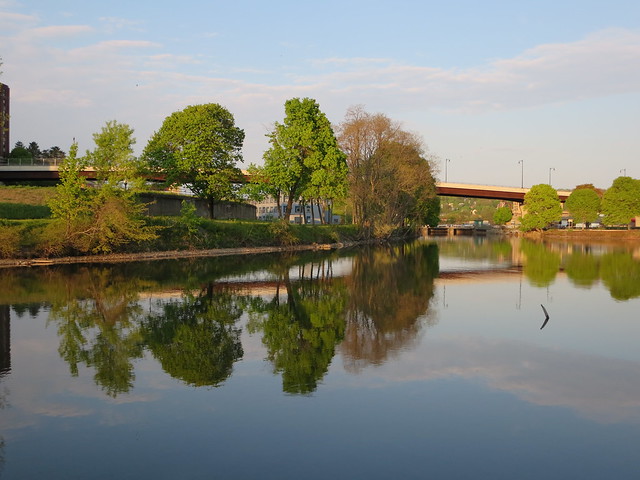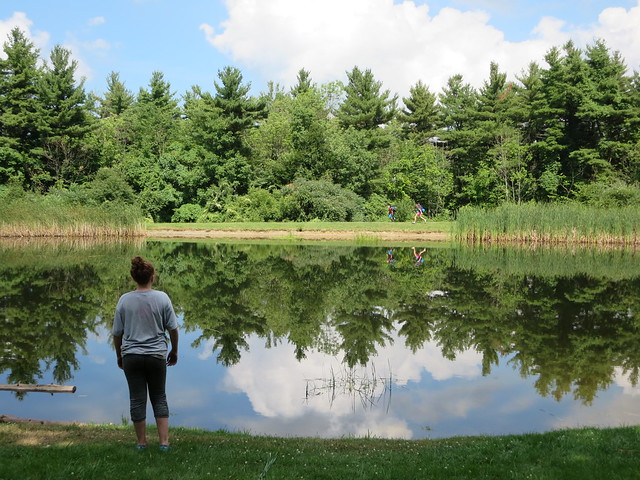At this time last year, I found myself ready to leave one of the most beautiful places I had ever been. We had just found what appeared to be the last parking spot in Zion National Park and were walking to what looked like a never ending line for the tram to go into the valley. And it was only 9:00 a.m. The amount of people was overwhelming. I could predict what it would be like on every trail and at viewpoint. I wanted to turn around and leave.
When it comes to getting outside, I feel like a living contradiction. I have worked for and supported organizations that help connect people to the natural world. And what better way to do that then to be outside in wild and wonderful places? However, when I choose to go to a trail, park, or place, my heart sinks when I see the parking lot packed with cars. My brain struggles to find balance between this good-but-bad news. I’m glad that others are out. But I crave outdoor experiences that are more solo. I identify with the poet, Mary Oliver when she concludes her poem, How I Go to the Woods with the line, “If you have ever gone to the woods with me, I must love you very much.”

The good news. More people are getting outside. According to a 2018 Outdoor Industry Association Participation report, the number of hikers has increased by 50% from 2007 to 2017. That’s wonderful. More people are outside, reaping the myriad physical, emotional, intellectual and spiritual benefits it has to offer. Spending time outside also helps us develop a conservation ethic to care for these places. The bad news. The big parks and photogenic destinations are often over crowded.
I’m glad large state and national parks exist to protect our natural treasures from development or exploitation and maintain them in a condition for all to see. Even if the number of people who want to see them threaten them. That is a good problem to have as an outdoor community.
As individuals, we don’t have to save our outdoor adventures for big trips and notable landmarks. In fact, if we want to have experiences that create a love and appreciation for the outdoors, we shouldn’t. A growing body of research about environmental behaviors and experiences finds that in order to create a world where people care for the natural environment, children have to have regular and direct contact with nature. I don’t think it is a stretch to say that the same is true for adults.
Both the increase in hikers and this research makes a strong case for smaller, local parks, greenspaces and wild backyards. Places for us all to spread out and to touch. Protected places you can look but not touch have their place. We also need our everyday nature places. Places that only require a quick walk or drive. And places that allow for playing, catching critters, stomping through mud, and laying down to relax. Places we can visit over and over again to witness the change of seasons, the effects of time. Places to get to know. Places that feel like ours.

More good news. These places exist in our community. When making a list, there is a risk in leaving something off. Feel free to fill in my gaps. In Chautauqua County, New York there are three county parks, two county trails, three state parks, eight wildlife management areas, fourteen state forests, and many more parks managed by municipalities and nonprofits.
In Warren County, Pennsylvania, in addition to multiple municipal parks there is one state forest, one state park, nine state game lands, and access to over half a million acres of national forest. Go farther afield and the list grows longer.

These places may not have the largest waterfall, highest mountain, or most picturesque landscape. But there are some cool places out there. And they provide a place to connect with the natural world. And take it from one who spends time in these places — many of them are remarkably uncrowded.
As everyone make plans for the summer, keep in mind local places for some easy, more frequent trips for the hands-on, every day connection with the natural world.
Katie Finch is a Nature Educator at Audubon.
Audubon Community Nature Center builds and nurtures connections between people and nature. ACNC is located just east of Route 62 between Warren and Jamestown. The trails are open from dawn to dusk as is Liberty, the Bald Eagle. The Nature Center is open from 10 a.m. until 4:30 p.m. daily except Sunday when it opens at 1 p.m. More information can be found online at auduboncnc.org or by calling (716) 569-2345.


Recent Comments